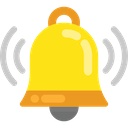Offline
Spent some time last night trying to set the static timing on the Tunebug. I used the Haynes manual as my reference, and keep in mind that I've never done this before. Took a while to find the timing mark, but I think I found it.
Once I figured I had it set, I cracked open the factory manual and saw that it says to remove the vacuum line from the distributor before setting the timing. I didn't know to do this. Do I need to go back and reset the timing now, with the vacuum line off?
This is on a stock 948 motor, BTW.
Also, any other hints for setting the timing? I'm not really sure how to know when it is right.
Once I figured I had it set, I cracked open the factory manual and saw that it says to remove the vacuum line from the distributor before setting the timing. I didn't know to do this. Do I need to go back and reset the timing now, with the vacuum line off?
This is on a stock 948 motor, BTW.
Also, any other hints for setting the timing? I'm not really sure how to know when it is right.

 Hi Guest!
Hi Guest!

 smilie in place of the real @
smilie in place of the real @
 Pretty Please - add it to our Events forum(s) and add to the calendar! >>
Pretty Please - add it to our Events forum(s) and add to the calendar! >> 
